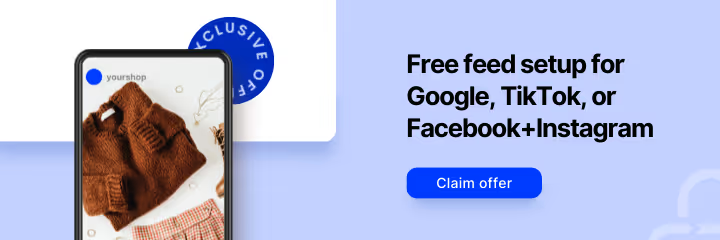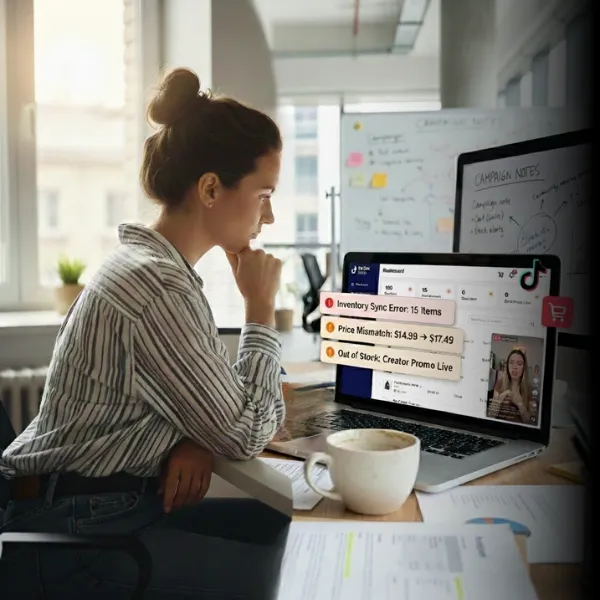Many advertisers rely on Google Ads for traffic and conversions, but depending on it too much could limit your growth. While Google dominates the search landscape, Microsoft Ads is steadily outperforming in key areas, especially for those looking to diversify. With access to a less crowded but highly valuable audience, Microsoft Ads offers a fresh way to drive growth. Don’t miss key opportunities in paid search.
Is Google Ads Overdependence Capping Your Reach?

When businesses invest in Google Ads, they expect its vast reach to guarantee the best returns. But as competition grows, cost-per-click (CPC) is rising, cutting into profits, even in well-optimized campaigns. What’s more, this focus often overlooks audiences that Microsoft Ads serves well: affluent buyers, experienced professionals, and decision-makers who are more likely to convert, especially in industries like finance and technology.
Microsoft Ads gives you access to these high-value groups in a marketplace with less competition and a lower CPC. In fact, the Microsoft Search Network powers 37.5% of U.S. desktop searches, connecting with 44 million searchers that Google can’t reach. Globally, that adds up to 7.2 billion searches. Plus, its LinkedIn integration lets you target B2B professionals and decision-makers with precision—something Google doesn’t offer in the same way. Diversifying your ad strategy lets you engage new, high-quality audiences while avoiding overreliance on increasingly expensive Google traffic.
The Real Cost of Sticking with Google Ads Alone
Using only Google Ads might seem like the best way to reach a wide audience. But as competition intensifies, CPC increases, eating into your profits. This is especially true in industries where competition is fierce. Focusing just on Google means you miss out on groups that Microsoft Ads can target more effectively.
With Microsoft Ads, you can reach professionals, high-income users, and decision-makers—especially through its LinkedIn connection. These users, who often browse on desktops, convert better in sectors like finance and technology. Plus, Microsoft Ads goes beyond just Bing search results—it’s integrated with products like Windows and Office, making it an ideal tool for reaching workplace audiences. By relying only on Google Ads, you’re likely spending more for less and ignoring audiences that could be more valuable.
Google’s crowded ad space means higher costs and shrinking visibility. Meanwhile, Microsoft Ads lets you find high-intent customers at a lower CPC. Microsoft Ads provides a cost-effective solution, with an average CPC of $1.54, which is 70% lower than Google Ads’ average CPC of $2.69. Additionally, Microsoft Shopping Ads boast a higher click-through rate (CTR) of 1.25%, compared to Google’s 0.86%.
This indicates that not only do Microsoft Ads cost less, but users are also more likely to engage with them. By spreading your budget across both platforms, you can lower costs and reach new customers, setting yourself up for growth.
Microsoft Ads vs Google Ads—Which Should You Choose?

Both Google Ads and Microsoft Ads have their strengths. Google Ads is great if you need to reach a broad audience, but that comes with higher costs as competition rises. Microsoft Ads, while serving a smaller market, is more budget-friendly and gives you access to niche audiences. It also connects directly with LinkedIn, making it a strong option for businesses that want to target professionals and decision-makers.
Google Ads Overview
Google Ads is a go-to platform for many businesses because of its massive reach and large ad network. But while it offers plenty of benefits, it has its challenges too. Here's a quick look at what Google Ads does well and where it can fall short:
- Key Features: Global reach with a comprehensive ad network. Advanced AI for audience targeting.
- Pros: Largest search engine with extensive reach. Advanced targeting options and varied ad formats. Data-driven insights for optimizing campaigns.
- Cons: Higher CPC in competitive industries. Oversaturation can lead to ad fatigue. Complex interface for smaller businesses or new users.
[See how Google AI tools can help you engage customers and optimize your strategies.]
Microsoft Ads Overview
Microsoft Ads takes a more focused and budget-friendly approach, perfect for reaching specific audiences. It also connects with Bing, LinkedIn, and Microsoft products like Windows and Office, giving it an edge in targeting workplace users. Let’s take a closer look:
- Key Features: Integrated with Bing, LinkedIn, Windows, and Office for seamless ad delivery. New features like Generative AI for Audience Engagement, Impression-Based Remarketing, and Cross-Device Tracking.
- Pros: Lower CPC due to less competition. Reaches professionals and workplace users effectively. LinkedIn connection enhances B2B targeting.
- Cons: Smaller overall market share compared to Google. Fewer ad placement options, limiting visibility.
Why Your 2025 Ad Strategy Needs Both Google and Microsoft Ads

Relying on just one ad platform can limit your reach and drive up costs. Google Ads gives you wide visibility, but the competition can make it expensive. Microsoft Ads, on the other hand, helps you target specific groups at a lower cost. By using both, you can balance your ad spend, cut costs, and reach more potential customers.
Brands that have integrated Microsoft Shopping Ads into their strategy are already seeing impressive performance gains. By tapping into Microsoft's unique audience, these brands have not only expanded their reach but also significantly improved key metrics like clicks, revenue, and return on ad spend.
- Blissy, a beauty accessories brand, saw a 20% increase in clicks and a 55% revenue boost by leveraging Microsoft Shopping Ads. By tapping into Microsoft’s audience and optimizing their ad targeting, they reached more high-intent shoppers, driving quick and impactful results.
- Watches of Switzerland, a luxury watch manufacturer, achieved a 16x ROAS and an 84% lower CPC using Microsoft Ads.
Combining both platforms lets you tap into Google’s wide reach while using Microsoft Ads to target more specific, high-value audiences. In 2025, using both platforms will give you better targeting options, more flexibility, and help you manage costs without losing reach.
Next Steps
Balancing your ad spend across both Google and Microsoft Ads can unlock new growth opportunities, improving your ad performance while keeping costs in check. Microsoft Ads gives you access to audiences that are often overlooked by Google Ads, including desktop users and professionals. Consider shifting part of your budget to Microsoft Ads, track your performance, and adjust as you see the results. Let us help you strategically expand your reach in 2025 with a smarter, data-driven ad strategy that makes the most of both platforms.






%20).webp)